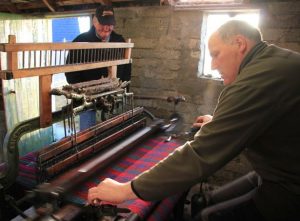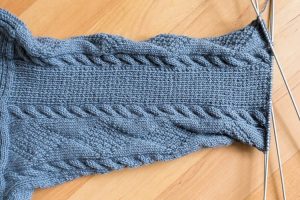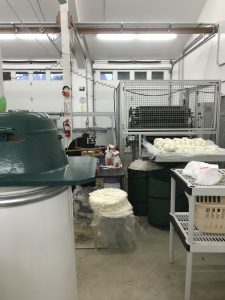Week 5 marks the halfway point of the quarter and my research in this area, so I have decided to create an informative post on one of the most notable concepts that I have come across in these past few weeks of research; that concept being cottage industries.
Cottage industries are defined as “an industry whose labor force consists of family units or individuals working at home with their own equipment” (Merriam-Webster). Over the course of my research, I have realized that almost all of the business models that I have directed my attention to fall along the lines of this definition and it has become a point of interest in my search for a sustainable and ethical form of textile production.
I began by looking at khadi cotton and its role amongst the unemployed peoples of India. Khadi is, by nature, a movement rooted in the spirit of the cottage industry. Traditionally and historically, all textiles in India were khadi until British textile mills and colonization began to shift focus away from local industry. Because of this, its role in the Swadeshi movement was pivotal to its survival and in many ways to the survival of the craftsman who participated in the industry. The focus of this movement was to provide employment to the many people who could not find employment. Particularly for those who did not have the ability to move out of rural areas to find jobs in factories. Khadi gave people the opportunity to have a source of income that was entirely self-driven and involved very little resources to create. This craft only requires self-powered machinery and the raw materials used for spinning and weaving, so there is very little investment that the craftsperson has to make initially to get started. Khadi’s association with freedom from colonization and support of craftspeople who have no other source of income has created a market that sustains those cottage industries and allows people to have options other than working in inhumane conditions.

A continent away, a similar industry arose in both Ireland and Scotland. There is an incredible parallel between the island people of these nations and the traditional crafts that received international attention. For the people of the Hebrides (Scots-Gaelic speaking islands off of the Northwest coast of Scotland) it was Harris Tweed, and for the people of the Aran Islands (Irish speaking islands off of counties Clare and Galway, Ireland) it was Aran knit sweaters. These two crafts began like most folk crafts have; necessity for survival and protection from the elements. Tweed was created to utilize as many different materials as possible and Aran jumpers (or “ganseys”) to protect fisherman from the harsh sea wind.

What was particularly interesting to me was that both of these crafts were not brought into the attention of the fashion industry by the people who were involved with the traditional production of the garments. Instead, in both instances (and in the case of khadi cotton as well), an “outsider,” usually someone of a more privileged socio-economic status was responsible for recognizing the economic potential of the craft and proceeded to create a business and market for the craft. In the case of Harris Tweed it was the

landlords of the land where the tweed originated that pushed for the marketing and sale of tweed and for the case of Aran sweaters, it was anglo-Irish protestants who were largely responsible for bringing the attention of the outside world to the crafts of the island people.
It is hard to know for sure whether the a genuine concern for the well-being of the island people of these nations. In the case of Scotland, there is an irrefutable link between the financial success of the locals of the Hebrides and that of their landlords. However, it cannot be denied that the emergence of the craft market did drastically change the lives of people who previously relied on sustenance farming and fishing as a way of survival. I do believe in a lot of ways, it was beneficial to have people from outside the island way of life involved in the production of their crafts. Without people who knew how to navigate the world of business and law, it would have been much more difficult for the crafts to be protected under trademarks that ensured the crafts stayed relatively close to the original “cottage” structure while facilitating enough growth to provide employment opportunities to many different members of the local community.
After learning all of this information, it was very special for me to be able to visit Olympic Yarn and Fiber – a modern day example of a cottage industry. The owner, Lynn started the business herself, invested in the machinery herself, and runs the business out of her garage by herself. This to me is the perfect example

of traditional cottage industry concepts blended with the high productivity of modern day mechanization. Because Lynn was able to purchase machinery that allows her to process more fiber than one in the traditional industry could dream, she has the ability to provide for herself and her family in a way that those employing traditional methods could only dream of in an entirely local and community-supported manner.
Because Lynn is only in her first few years of business, she is not able to provide employment for anyone in the community yet. But it is a goal of hers and I am very eager to see how the business progresses and continues to be pillar of local textiles and community sustainability.